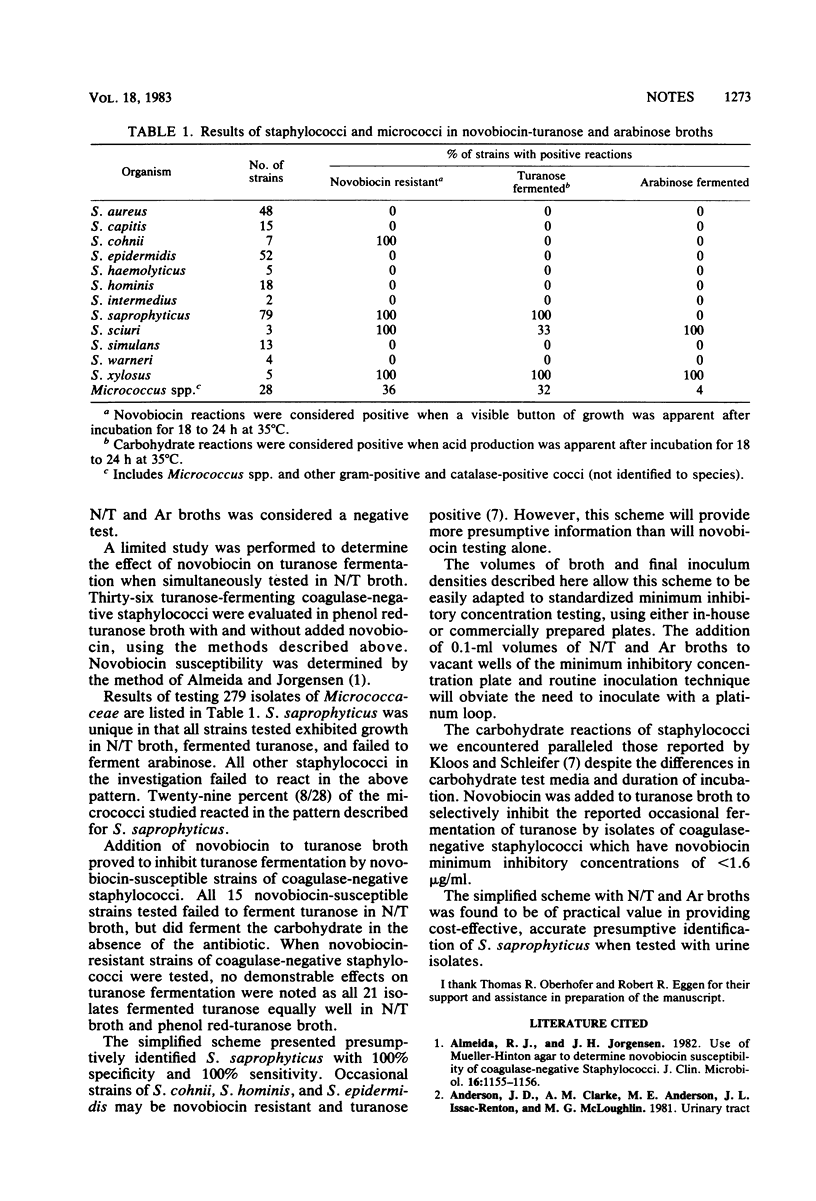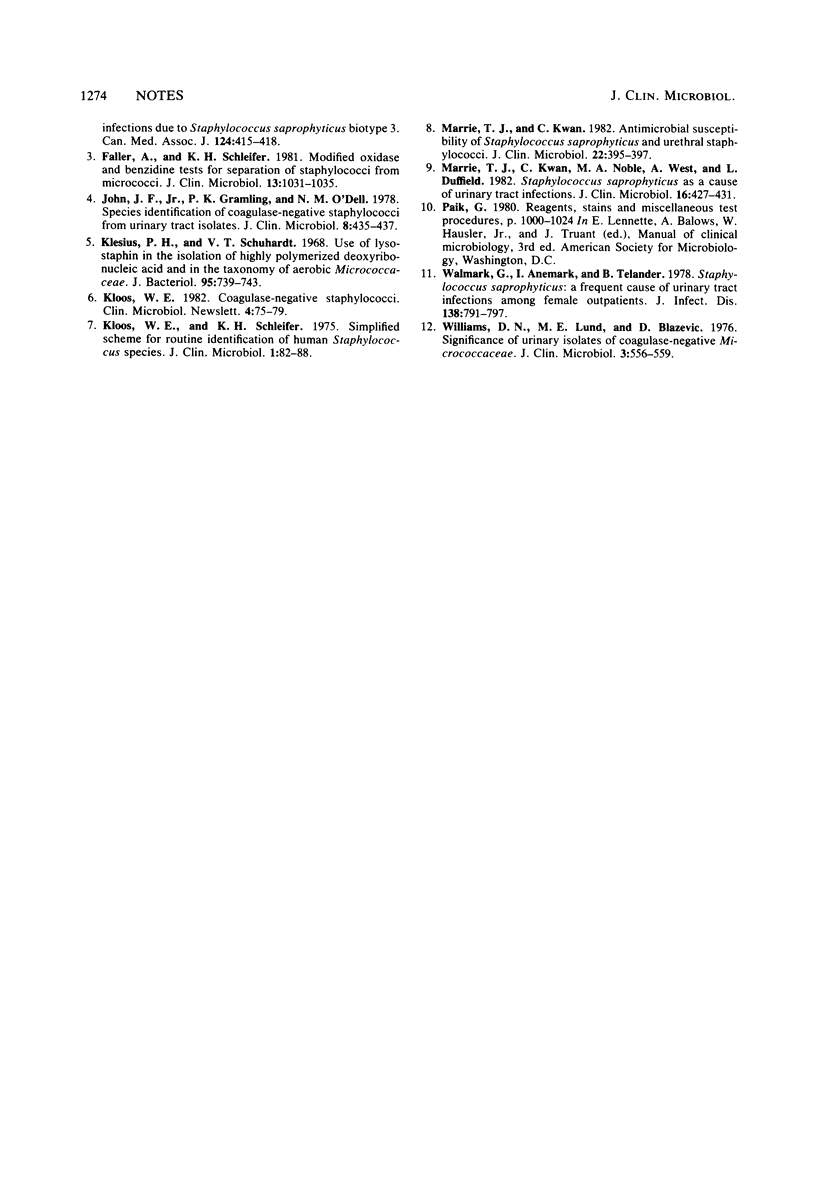Abstract
A simplified scheme for the presumptive identification of Staphylococcus saprophyticus was investigated. Clinical isolates of Micrococcaceae were tested in microtiter plates containing phenol red-novobiocin-turanose broth and phenol red-arabinose broth. Standard saline suspensions of test organisms served as inoculum. Identifying features were growth within 18 to 24 h in novobiocin-turanose broth, indicating resistance to 1.6 micrograms of novobiocin per ml and fermentation of turanose. With this method, all clinical isolates of S. saprophyticus tested were correctly identified.
Full text
PDF


Selected References
These references are in PubMed. This may not be the complete list of references from this article.
- Almeida R. J., Jorgensen J. H. Use of Mueller-Hinton agar to determine novobiocin susceptibility of coagulase-negative staphylococci. J Clin Microbiol. 1982 Dec;16(6):1155–1156. doi: 10.1128/jcm.16.6.1155-1156.1982. [DOI] [PMC free article] [PubMed] [Google Scholar]
- Faller A., Schleifer K. H. Modified oxidase and benzidine tests for separation of staphylococci from micrococci. J Clin Microbiol. 1981 Jun;13(6):1031–1035. doi: 10.1128/jcm.13.6.1031-1035.1981. [DOI] [PMC free article] [PubMed] [Google Scholar]
- John J. F., Jr, Gramling P. K., O'Dell N. M. Species identification of coagulase-negative staphylococci from urinary tract isolates. J Clin Microbiol. 1978 Oct;8(4):435–437. doi: 10.1128/jcm.8.4.435-437.1978. [DOI] [PMC free article] [PubMed] [Google Scholar]
- Klesius P. H., Schuhardt V. T. Use of lysostaphin in the isolation of highly polymerized deoxyribonucleic acid and in the taxonomy of aerobic Micrococcaceae. J Bacteriol. 1968 Mar;95(3):739–743. doi: 10.1128/jb.95.3.739-743.1968. [DOI] [PMC free article] [PubMed] [Google Scholar]
- Kloos W. E., Schleifer K. H. Simplified scheme for routine identification of human Staphylococcus species. J Clin Microbiol. 1975 Jan;1(1):82–88. doi: 10.1128/jcm.1.1.82-88.1975. [DOI] [PMC free article] [PubMed] [Google Scholar]
- Marrie T. J., Kwan C. Antimicrobial susceptibility of Staphylococcus saprophyticus and urethral staphylococci. Antimicrob Agents Chemother. 1982 Sep;22(3):395–397. doi: 10.1128/aac.22.3.395. [DOI] [PMC free article] [PubMed] [Google Scholar]
- Marrie T. J., Kwan C., Noble M. A., West A., Duffield L. Staphylococcus saprophyticus as a cause of urinary tract infections. J Clin Microbiol. 1982 Sep;16(3):427–431. doi: 10.1128/jcm.16.3.427-431.1982. [DOI] [PMC free article] [PubMed] [Google Scholar]
- Wallmark G., Arremark I., Telander B. Staphylococcus saprophyticus: a frequent cause of acute urinary tract infection among female outpatients. J Infect Dis. 1978 Dec;138(6):791–797. doi: 10.1093/infdis/138.6.791. [DOI] [PubMed] [Google Scholar]
- Williams D. N., Lund M. E., Blazevic D. J. Significance of urinary isolates of coagulase-negative Micrococcaceae. J Clin Microbiol. 1976 Jun;3(6):556–559. doi: 10.1128/jcm.3.6.556-559.1976. [DOI] [PMC free article] [PubMed] [Google Scholar]


